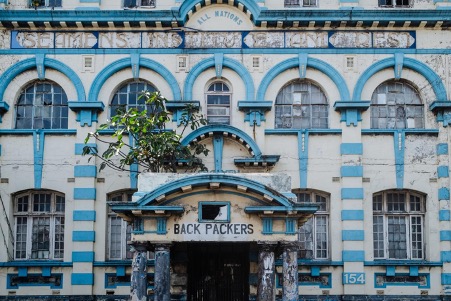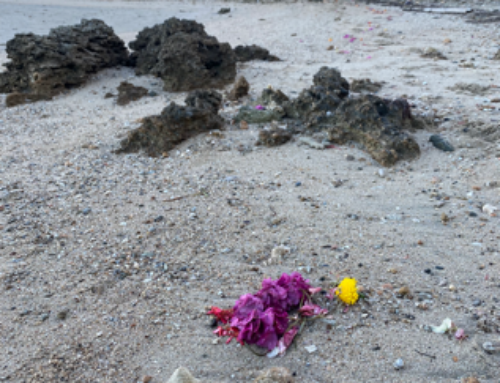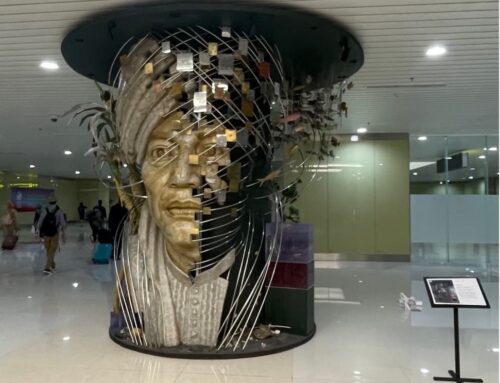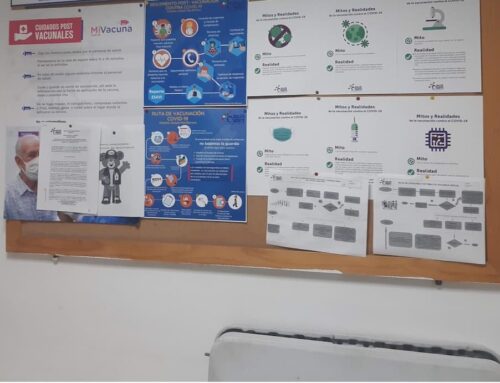
A ruined building, a runner muses, as he makes his way along the yet-to-be-gentrified quarter opposite Durban, South Africa’s new cruise ship terminal. Morning light streams through the cracks of the aged building, casting a gentle glow on its weathered facade. Located on the eastern edge of Durban’s busy port, the once-proud Seaman’s Institute bears witness to a long and tumultuous history. Initially serving as a haven for weary seafarers seeking solace after surviving treacherous waters, this iconic structure has witnessed South Africa’s troubled past of segregation, apartheid and inequality. From the racially-charged riot and brutal assault on Mahatma Gandhi upon his arrival at the port to the influx of wounded soldiers in need of first aid during the Boer War (Hyslop 2018), the Seaman’s Institute has been a place where stories of survival, resilience, and adventure intertwine with tales of marginalization, loss, and yearning. Through its (partially) welcoming embrace during the colonial and apartheid era, the walls have been tempered with voices of endurance, albeit exclusively for the white population.
Today, the crumbling exterior of the Seaman’s Institute stands as a poignant symbol of urban decay. Forgotten by history and long abandoned, it bears the name “BACKPACKERS” from its past use as a backpackers’ hostel. Serving as a testament to changing times, the building is a relic of forgotten narratives and faded dreams. Nature, relentless and determined, has begun to reimagine and reclaim the site. Visual artist Alexandra Rose Howland took this photo as part of our arts and research collaboration. This image shows how nature has colonized that which has been lost, with plants sprouting through crevices and cracks, their roots firmly anchoring themselves to the decaying walls. This portrayal contributes to the production of knowledge, transcending words by immersing viewers in a visual representation. This photo extends the experience of precarity, while simultaneously revealing natures restoration through re-wilding. It moves us closer to the constantly evolving—and perhaps never attainable—space of healing.
Our research led us to South Africa to understand how people and places are attempting to heal in the wake of devastating floods in Durban in April 2022. However, as we spent more time in the city exploring its history and identity, we realized that this environmental disaster was only part of the story of overlapping and intersecting catastrophes that Durban has endured. The buildings on this street are in different states of disrepair, yet I quickly became captivated by the Seaman’s Institute. Despite its ruined appearance, it possessed a remarkable grandeur that comes to life in each photo. The concept of ruination is often associated with human abandonment, a consequence of neglect that manifests as a “perpetrated act” (Stoler 2008). Driving past the Seaman’s Institute, one assumes that the building is completely deserted, yet life is seen amongst pockets of the ruins, it homes an eclectic group of flood survivors. All permanently living within a temporary space that was set up by the local municipality in the aftermath of this catastrophic environmental disaster. Photographic representations unveil the subtleties of life within its walls, offering glimpses of survival and growth amidst the challenges of precarious living. The individuals that reside at the Seaman’s Institute were displaced by the floods, but they continue to struggle for urban survival amidst the crumbling walls of their new home. Their precarious existence is perpetuated by the physical conditions of their space, which is controlled and monitored by a municipality-appointed security guard.
Filth and decay serve as integral elements of deterioration, with dirt disrupting social order and being defined as “matter out of place” (Douglas 1965). Despite housing people, the exterior decay of the Seaman’s Institute positions the building as “matter out of place” as gentrification occurs around it. The people living within its walls have their own “matter out of place” identities that they negotiate as they attempt to claim their right to the city in the wake of their displacement by the flood. The building’s grime and dilapidation can be seen as an abstract representation of the overlapping catastrophes that the city has endured and the resilience demanded on its people, amongst their crumbling and fading world. Does the lived experience and the social disorder it represents reflect the concept of ruination or resilience, pushed too far? How do ethnographers understand this complex world and the everyday lived experience of urban decay in cities like Durban, situated in the nexus of social, economic, political and environmental pressure and risk? How do they navigate ruination and healing, not as binaries, but as part of the continuum of resilience?
To gain a deeper understanding of the lived experience of ruination, our research explores interactions between bodies and environment, specifically examining how the human body engages with its surroundings (Low 2023, 83). A post-humanist approach broadens our perspective, allowing for the acknowledgment of the environment as an integral part of the ethnographic process. This includes observing the slow reclamation of nature, exemplified by the growth of trees on the roof of the Seaman’s Institute seen within this image. Through this approach, I explore the “third space” that exists between the realm of ruins and the realm of repair, encompassing both real and imagined spaces. The third space explains connections beyond the human, to understand how injury but also healing may travel across physical, social, and environmental bodies. Altering society’s understanding of these processes might likewise lead to the rewilding of the ecology of the human mind, towards a space of healing (Bateson 1972).
References
Bateson, Gregory. 1972. Steps to an Ecology of Mind: Collected Essays in Anthropology, psychiatry, evolution, and epistemology. University of Chicago Press.
Hyslop, Jonathan. 2018. “The Politics of Disembarkation: Empire, Shipping and Labor in the Port of Durban, 1897–1947.” International Labor and Working-Class History 93:176–200.
Lefebvre, Henri. 2012. “From the Production of Space.” In Theatre and Performance Design, ed. Jane Collins and Andrew Nisbet, pp. 81–84. London: Routledge.
Low, Setha. 2023. Why Public Space Matters. Oxford University Press.
Stoler, Ann Laura. 2008. “Imperial Debris: Reflections on Ruins and Ruination.” Cultural Anthropology 23(2): 191–219.
Alexandra Rose Howland (US/UK), a photographer and visual artist, reshapes narratives through multimedia exploration. Her decade-long journey through conflict, post-conflict, and environmental disaster settings, blends abstract artistry with diverse mediums, urging an alternative perspective on established stories.
Emily Ragus is a Sir John Monash scholar pursuing a PhD in Anthropology at the University of Amsterdam, where she is exploring the impact of the 2022 KwaZulu Natal floods on injury and healing across human and environmental connections. Her research stands on her professional background of 15 years of emergency nursing, helicopter trauma retrieval and global disaster response.
Cite as: Howland, Alexandra Rose and Emily Ragus. 2024. “Healing Ruins”. In “Photographic Returns,” edited by Christina Kefala and Ipsita Day, American Ethnologist website, 23 June. [https://americanethnologist.org/online-content/collections/photographic-returns/healing-ruins-by-emily-ragus-with-photography-by-alexandra-rose-howland/]
This piece was edited by American Ethnological Society Digital Content Editor Katie Kilroy-Marac (katie.kilroy.marac@utoronto.ca).




